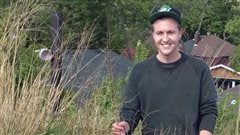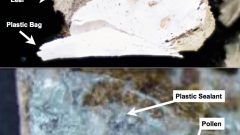When we think of bees, the image that readily comes to mind is one of honey bees in the large social well-structed societies. But most of the world’s bees are not social, but solitary, making their homes in plant stems or in tiny holes and crevices.
Scott MacIvor is a University of Guelph graduate and now a doctoral student in the biology department at York University in Toronto. He recently made a surprising discovery that a few of the many urban bees he was studying, were using plastic wastes to make their nests.
ListenMacIvor has nesting boxes set up in a variety of areas in various areas in the major urban centre of Toronto as part of his ongoing study of urban bees.

Recently while studying some of the nests of these solitary bees, he discovered some strange materials being used.
Mixed in with the bits of leaf and organic material were bits of plastic.
The use of about 25% plastic in the brood cells was discovered in isolated cases of two types of bees, a leaf-cutter, and another that uses tree and plant resin.

Leaf-cutter nest shows bits of plastic bag having been added to organic matter, while lower nest shows grey polyurethane caulking material (S.MacIvor) CLIKC TO ENLARGE
In the leaf-cutter case, the insect had apparently chewed tiny bits from a plastic shopping bag, while in the “resin” bee, it had picked up a grey plastic caulking.
At first the strange grey goo was a mystery, but with the help of an electron microscope, x-ray microanalysis and infrared microscopy at the University of Guelph, they were able to determine the polyurethane composition and the surprising realization of its origin. They noted that because typical organic material, leaves etc were available, it seems the bees specifically chose the plastics. They also chewed the material differently than typical organic material to form a putty they could mould into their brood cells.
MacIvor sys, “Plastic waste pervades the global landscape,” adding that usually it has adverse effects, but that this shows insects are adapting to a human dominated world and “suggests innovative use of common urban materials.”
Although its often been shown that plastics have adverse affects on species and the ecosystem, few scientists have observed insects adapting to a plastic-rich environment, he said.
The nests containing plastic were among more than 200 artificial nest boxes monitored by MacIvor as part of a large-scale investigation of the ecology of urban bees and wasps, a project involving numerous citizen scientists.
MacIvor says that so far, the cases he noted have been very few and isolated and are not a widespread behaviour pattern. Nevertheless the mere fact that even a tiny few have used the man-made material is still very interesting.







For reasons beyond our control, and for an undetermined period of time, our comment section is now closed. However, our social networks remain open to your contributions.